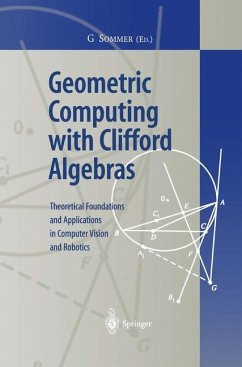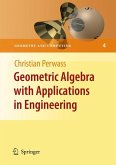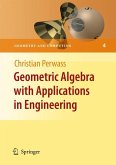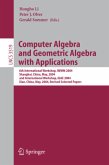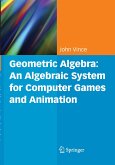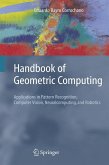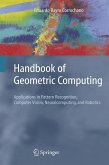Clifford algebra, then called geometric algebra, was introduced more than a cenetury ago by William K. Clifford, building on work by Grassmann and Hamilton. Clifford or geometric algebra shows strong unifying aspects and turned out in the 1960s to be a most adequate formalism for describing different geometry-related algebraic systems as specializations of one "mother algebra" in various subfields of physics and engineering. Recent work outlines that Clifford algebra provides a universal and powerfull algebraic framework for an elegant and coherent representation of various problems occuring in computer science, signal processing, neural computing, image processing, pattern recognition, computer vision, and robotics. This monograph-like anthology introduces the concepts and framework of Clifford algebra and provides computer scientists, engineers, physicists, and mathematicians with a rich source of examples of how to work with this formalism.
From the reviews: "This monograph-like anthology presents a collection of contributions concerning the problem of solving geometry related problems with suitable algebraic embeddings. It is not only directed at scientists who have already discovered the power of Clifford algebras ... but also at those scientists who are interested in Clifford algebras ... . Therefore, an effort is made to keep this book accessible to newcomers ... while still presenting up to date research and new developments. ... The 21 coherently written chapters cover all relevant issues ... ." (Vasily A. Chernecky, Mathematical Reviews, Issue 2003 m) "This is a collection of contributions which describe the solution of geometry-related problems by suitable algebraic embeddings, especially into Clifford algebras. ... this book can serve as a reference to the state of the art concerning the use of Clifford algebras as a frame for geometric computing." (H. G. Feichtinger, Monatshefte für Mathematik, Vol. 140 (4), 2003) "Clifford Algebras were introduced by W. K. Clifford in 1878. ... The book is a collection of 21 chapters/papers written by experts in the field. These 21 papers are coherently written and the book can be read almost like a monograph. ... The book is clearly written and well structured. It is recommended to mathematicians, physicists, computer scientists, engineers, and ... to graduate students." (K. Gürlebeck, Zeitschrift für Analysis und ihre Anwendungen, Vol. 21 (4), 2002)

